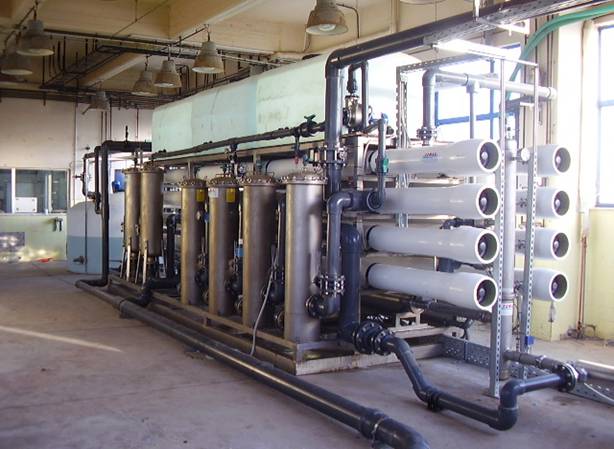A Look At A Few Reverse Osmosis Plants From Around The Globe

If you’re a science buff, you’re probably familiar with the process of osmosis. Osmosis occurs when molecules move through a permeable membrane into a region of higher concentration. If this sounds like something that was just explained in a foreign language, think of it this way: osmosis is like dipping a sponge into water. When the sponge meets the water, the water gets soaked up by the sponge, causing the sponge to expand. In other words, the molecules (water) move through a permeable membrane (the sponge). Another real-world example would be contact lenses; we put our contact lenses in saline solution at the end of the day rather than water, with the contact acting as the permeable membrane through which the water solution (which contains salt) can pass through—the solution is the same concentration as your eye.
Osmosis is a basic biological truth. But what about reverse osmosis? Have you ever wondered how salt water is cleaned and purified? Water purification relies on reverse osmosis.
When osmosis occurs, it is the result of water flowing in its most natural way. Reverse osmosis, on the other hand, uses pressure to reverse the natural flow of that water, pushing it through the permeable membrane in contradiction to its customary rhythm. In regular filtration, straining is used to separate out larger particles from the water. In reverse osmosis, however, the separation of said particles from the water depends on a variety of factors, including pressure, fluid concentration, and flow-rate, making it a more effective means of water purification, particularly in converting sea water or salt water to pure drinking water.

Construction of the largest reverse osmosis plant in the world, known as the Hadera Project, began in 2011 in Israel and is scheduled to be completed this year. The plant will cost $400 million US and will improve Israel’s water availability by 150 million cubic meters each year. The plant is 51 percent owned by IDE Technologies and 49 percent owned by Hutchison Water.
IDE Technologies also partnered with Reliance Industries to create the Reliance Jamnagar Project in India, India’s largest desalination reverse osmosis plant. Benefits of the plant include energy efficiency, low temperatures for increased worker safety, minimal pre-treatment of the water, and operations with 99 percent reliability. The plant has been leading the country in reverse osmosis technology for over a decade.
Perhaps one of the most highly regarded reverse osmosis projects in the world is Energy Recovery Inc.’s work in Oman. The project, which will use eight reverse osmosis trains* to desalinate seawater in the country, is projected to be successful in purifying 30,000 cubic meters of salt water per day. As a result, the project is suspected to produce potable drinking water for 800,000 people.
While the cost of building reverse osmosis plants can be high up front, reverse osmosis that desalinates sea water is ultimately a more cost effective and energy efficient method than using thermal-based systems. Additionally, the technology can ultimately provide water to thousands of people, reducing the strains put upon land and populations through water shortages.
*Reverse osmosis trains refer to the technology by which reverse osmosis occurs. A typical “train” consists of a turbine pump that is used to provide the necessary pressure required to move the water through the purification membranes. In the Energy Recovery project in Oman, each train contains 26 pressure vessels.
Wade Carpenter writes on water purification, reservoirs, reverse osmosis membrane construction, conservation, wildlife preservation, environmental science and other related topics.
Image credit goes to william2029.
